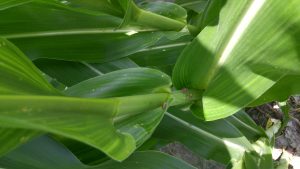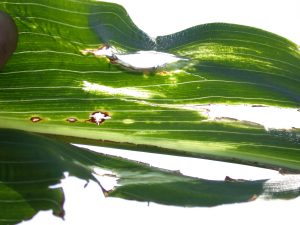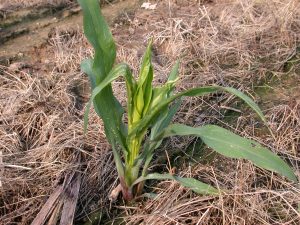Last week the entomology department followed up on aerial spray applications for stink bugs. These applications were very effective (>98% mortality). If you are considering spraying for this pest in your corn, NCSU recommends bifenthrin as the pyrethroid of choice. This is consistent with spray trials at the Tidewater AREC that showed poor control with lambda-cyhalothrin (karate, warrior II). All pyrethroid insecticides must make contact with the insect to kill it and there will be poor, if any, residual control. We recommend waiting to treat until all wheat is harvested in the nearby area. So far, there have been no infestations at threshold in corn fields that are greater than 1/4 mile from wheat. Currently, we are scouting Virginia’s eastern shore where the wheat harvest is in progress.





